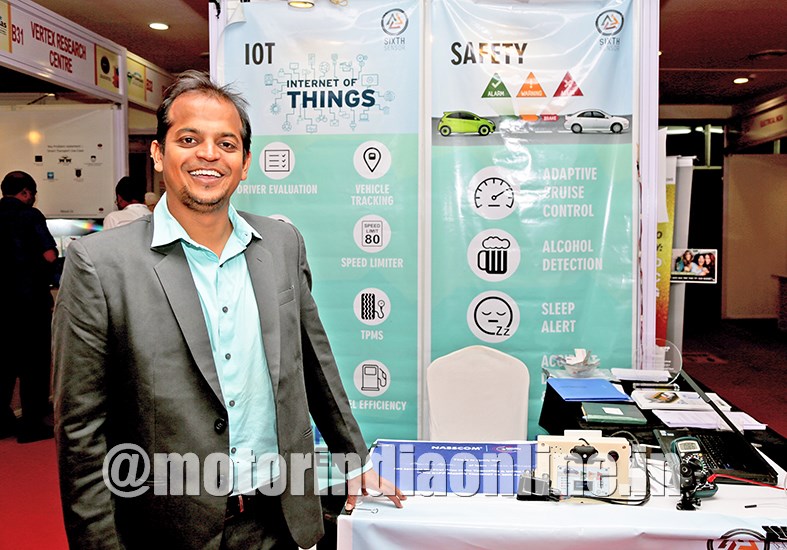Paritosh Dagli was lucky. When, as a student in the US driving a second-hand car, he walked away literally scratch-free after being in an accident a few years ago. Shaken and thoroughly stirred, he decided to prioritize vehicular and people safety in all kinds of vehicles and soon began working on a solution.

This action-oriented computer engineer founded Sixth Sensor Technology in 2014 after coming back to India and developed their flagship product – Front Collision Avoidance System – with ARAI.
Paritosh Dagli, Director, shared: “We use LiDAR technology and the sensor is installed in the front of the vehicle. The sensor is spread across 16 segments with FOV of 45 degrees with a range of 40 meters and can detect any kind of obstacle – whether non-metallic, pedestrian, animals, trees or even road dividers. It is the fusion of sensors for advanced front collision avoidance system which is a powerful technology.”
The sensor fires two alarms in succession based on the time to collision, relative velocity and distance. If the vehicle gets too close, then the sensor will slow down the vehicle where ultimately it will force the brakes on automatically or the accelerator is cut off.
As on today, Sixth Sensor has fitted their system into more than 800 buses and trucks.
He added: “We feel that we have been able to save about 80-90 per cent of the accidents till date as per the statistics combined with the data that is uploaded to our portal. Based on the automatic braking instances and the data that we collect, our algorithms reflect the number of minor and major accidents that have been avoided.”
How significant is the safety of passengers, cargo, drivers and vehicles to the stakeholders in the industry? Theoretically, 100 per cent. Yet, the harsh reality is that safety is an after-thought.
He agreed: “Till a few years ago, safety was the last thing on any one’s mind, especially, that of the fleet owner. It is so because safety comes at a cost and it does not show immediate ROI. Lately, we are seeing more fleet owners are prioritizing it and it is probably because the government and the industry itself are emphasizing on it. So we are seeing a trend towards safety now.”
The advantage with Sixth Sensor’s system is that it can be retro-fitted on any type of vehicle. Dagli shared more on it: “The installation takes a couple of hours. Since it has been designed to be a plug-and-play device, our customers can buy any module, get it installed and run it. It is simple to use, it has simple interface and any driver can understand it easily.”
The device is available in a few models where only the algorithm changes based on the vehicle weight, leaving upto 80 per cent of the device the same.
Three major challenges that Sixth Sensor faces are – one, cost is a deterrent but the company is working continuously on making it economical without losing its magic; two, making the fleet owners understand the crucial role that this solution plays in keeping his assets safe; three, convincing the drivers to change their driving habits to make them safer drivers.
According to Dagli, it takes about a fortnight for an average Indian driver to get adapted to the new system where he is forced to maintain a safe distance between the vehicles. Currently, the device costs about Rs. 35,000 but Dagli is working on it to bring it down further.
Other products that Sixth Sensor has on offer are tyre-pressure monitoring system, alcohol detection and driver drowsiness system.
As the winners of NIPP (NASSCOM Industry Partnership Program) Mobility Challenge, Sixth Sensor is working towards a vision to mitigate road accidents by at least 50 per cent in the next two years. Dagli feels that if the current yearly rate of 1.5 lakh road accident deaths in India has to reduce, then it is beyond high time to take up safety as a serious issue and empowering drivers and fleet owners with solutions like Sixth Sensor Technology is the only way out.